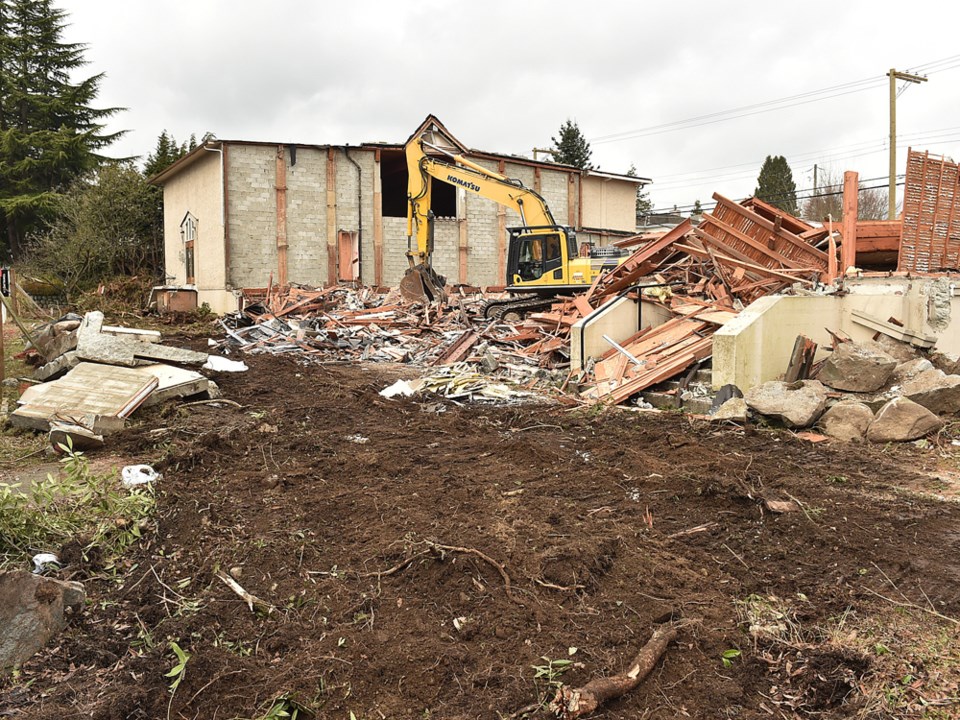Sometimes, rather than being worth 1,000 words, a picture can elicit 1,000 questions.
That was certainly the case for Oakridge United Church on 41st Avenue between Main and Cambie streets. Photos were widely circulated online over the weekend of the church lying in a heap of rubble, inviting all sorts of anger and confusion about the demolition: Why was this happening? What’s being done to retain the church’s materials and 70-year heritage value? What’s happening to Vancouver?
DEMOLISHED: Oakridge United Church, designed in 1949 by Twizell & Twizell – on our 2015 Top10 Threat List + see w/ photos
— Heritage Â鶹´«Ă˝Ół»(@HeritageVan)
We asked the developer, Townline Homes, church minister Neill McRae and a provincial representative with the United Church of Canada some of the most pressing questions surrounding the project.
First question: why was the building, which was designed in 1949 by Twizell & Twizell architects, allowed to be torn down?
Answer: the church wasn’t subject to any specific protections or heritage designations. As such, it was re-zoned from its former land use designation of one-family dwelling to comprehensive development, and will become a mixed-use development comprised of a six-storey concrete building that opens in the fall of 2019.
But what happens to the church?
According to everyone involved, a new 6,000 square foot church will be on the ground floor of the development when it opens next year. Terry Harrison, who works in the property resource field for the provincial arm of the United Church of Canada, said the new church will be built exclusively via developer dough.
OK, but has the congregation been displaced?
Yes and no. McRae said parishioners knew of the site’s impending sale five years ago and the deal was finalized last year.
“We bit by bit prepared the congregation,” he said. “They understood it. It was not manipulative. It was informative so that they got it.”
McRae explained that the building was decommissioned last spring. Harrison said it hasn’t been in use since. Roughly 60 worshippers have been moved to another church in Marpole and will return next year.
“We will absolutely be going back,” McRae said. “And there will be others coming with us.”
But what about the materials? The loudest outrage seems to be about reclamation — as in, what effort was made to preserve items from within the church: pews, windows, plaques, wooden beams, art and the like?
What is seen in the photos from the weekend, according to Harrison, were the remnants of the building that no one wanted, or other parts that couldn’t be re-purposed. The flooring, for example, was just plywood with a thin veneer layer over top of it. Whatever could be recycled was, she said.
“It’s not just that nobody wanted it,” Harrison said. “Everything looks pretty from a distance and then you get up close and it’s not as pretty, it’s not as high quality.”Ěý
But why not leave the church intact, and build the incoming 47 units around it?Ěý
“It’s not possible to retain the church and to have a viable project around that,” Slot said
So that leaves the rest of the city that was seemingly caught off guard by the wrecking ball’s presence over the weekend. For heritage lovers, it's little consolation. It will still be considered a loss, as the church was on Heritage Vancouver’s .
“Church buildings are used not just for Sunday worship space, but for all those other community, social and cultural and educational activities,” Heritage Â鶹´«Ă˝Ół»board member George Challies told the Courier Monday. “They often have daycares or offer courses seven days and week and .”
Both McRae and Harrison stressed the church’s demise was a slow burn, rather an overnight surprise. The contributing factors are many: dwindling congregation numbers, more community centres offering more amenities and obvious development pressures. McRae referenced a congregation in Edmonton that meets in a nursing home.
Time is also a big factor. Harrison said some congregations aren’t seeing young people entering the fray. As well, many structures built in the ’50s are near the end of their useful life and eat away at maintenance budgets that could be spent elsewhere.
Harrison is seeing the phenomenon happen across Metro Â鶹´«Ă˝Ół»and Canada.
“What’s the same is the demographics, the challenges in the highly-secularized world where religion isn’t responding to the needs of its community the way it did in the ’50s, an aging building and high real estate,” she said.
@JohnKurucz
- This story has been updated since it was first published



